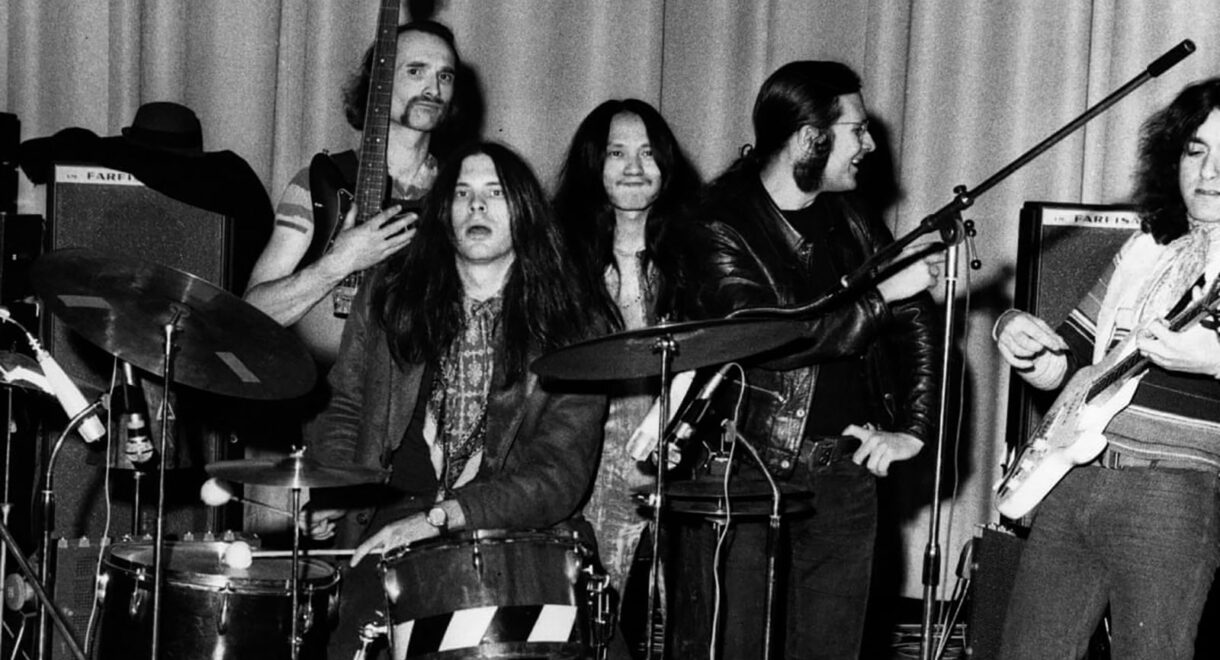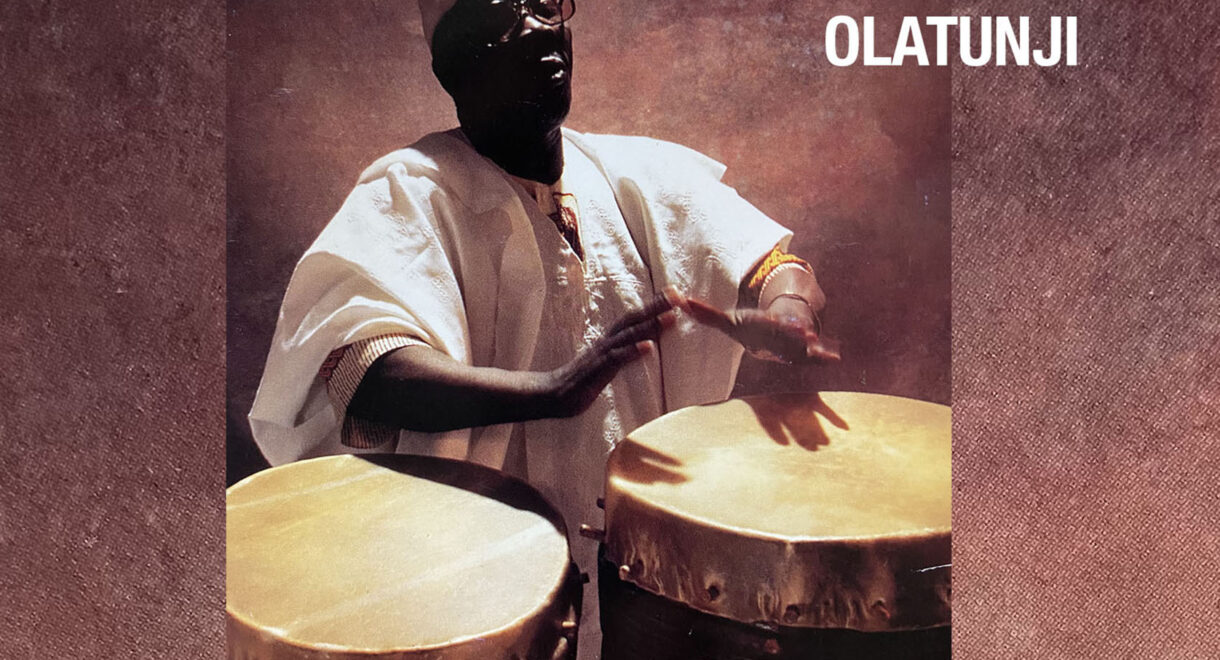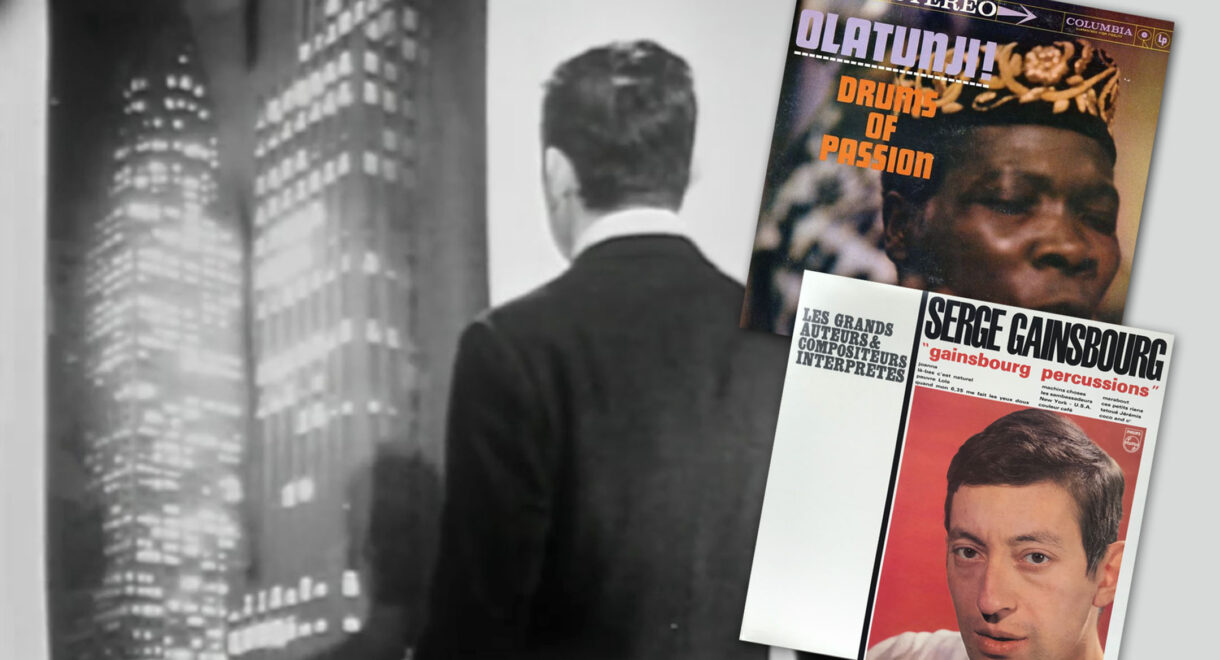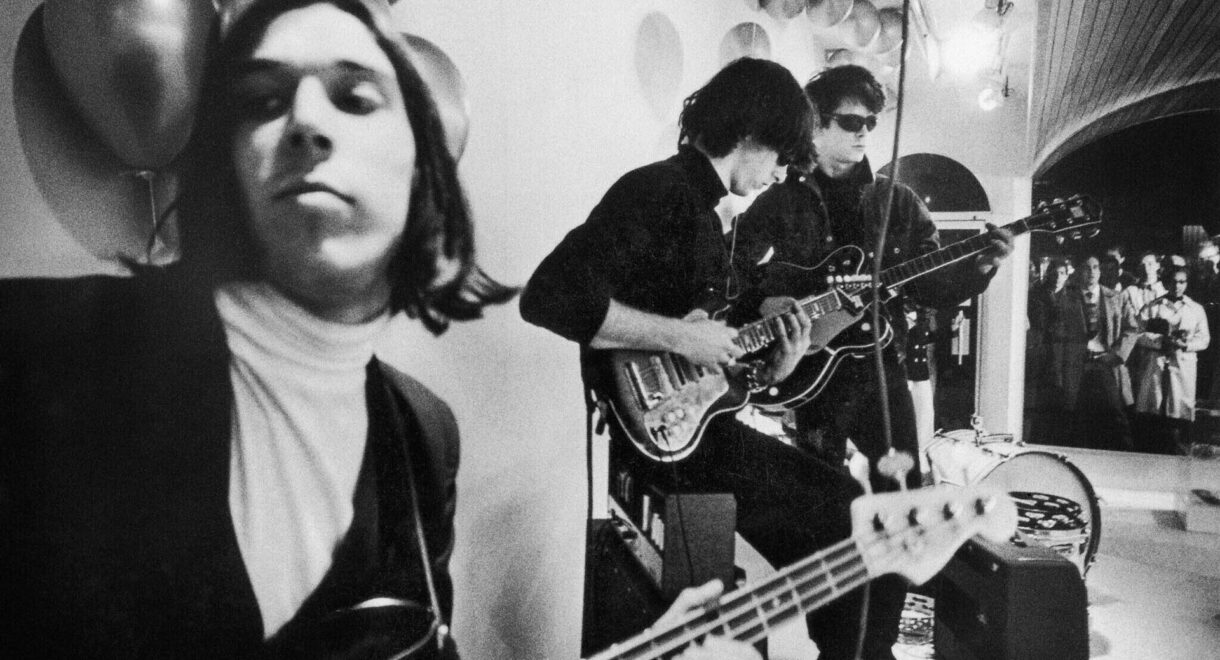Join us for a krautrock listening party this Friday at the JACCC private Japanese garden. Holger Czukay, Michael Karoli, Jaki Liebezeit, Irmin Schmidt: The core members of visionary […]
Saxophonist, Fisherman, Actor, Painter: The Multi-Media Moods of John Lurie

The Lounge Lizards, Fishing with John, Stranger Than Paradise, Painting with John: ISC celebrates a singular artist.
To continue the celebration of John Lurie’s new introspective HBO series, Painting With John, we’d like to take a closer look at the saxophonist and bandleader, whose multi-disciplinary talent has given us many beloved works. Across a life in art, Lurie has been known for his horn playing, his uninhibited, hilarious interactions in his first TV series, Fishing with John, his acclaimed Works on Paper visual art exhibition at the Museum of Modern Art and his star-turn with Tom Waits in Jim Jarmusch’s Down By Law. Somebody should write a book. But until then, here’s a brief primer.
The Lounge Lizards
Lurie entered the New York music scene through his assembling of this 1978 outfit, which also featured his piano-playing brother Evan. Originally conceived to challenge jazz conventions, the Lizards formed amid the New York No Wave movement of the late 1970s, and over time it became an outlet for Lurie’s serious and sophisticated compositions. Jumping from Mingus-inspired jazz to contemporary experiments in post-punk, the group found a major admirer in Andy Warhol. This first Lounge Lizards album is an abrasive and eclectic record created by a Rolodex of New York underground’s finest, including DNA and Ambitious Lovers co-founder Arto Lindsay and Pere Ubu drummer Anton Fier.
Below are two favorites from the Lounge Lizards era. The first is 1988’s Voice of Chunk, which opens with the stunning “Bob the Bob.” A lovely tune showcasing a soulful Lurie solo, it’s a piece we often played at the listening bar in the wee hours. Another, the 1998 record Queen of All Ears, hinted at Lurie’s future musical direction.
Marvin Pontiac
In 1999, Lurie invented a guy named Marvin Pontiac and then quietly released a greatest hits album. The record included a storied biography of Pontiac’s troubled life, along with the only known (and very blurry) photo of this long-lost artist. Lurie took the approach because it allowed him to release music in which he sang. He had considered doing it under his own name for years, but held off.
He says of the record, “The idea of me putting out a record where I sang seemed ostentatious or pretentious. Like the music of Telly Savalas… I don’t sing very well; I was shy about it. As a character, it made it easier.” After its release, Marvin Pontiac was praised by artists including David Bowie, Iggy Pop and Leonard Cohen.
John Lurie National Orchestra
Lurie has composed a number of film scores, including for three early works by Jim Jarmusch, in the process introducing a number of different incarnations and monikers for his solo work. The John Lurie National Orchestra was a project that strayed from the tightly rehearsed recordings of the Lounge Lizards’ previous albums and toward a more improvisational path. Featuring loose and contemplative pieces that incorporate eastern stylings and instruments such as congas, timbales, kalimba and other small percussion, the record’s openness and relaxed musical approach seems to have had an effect on Lurie’s playing. Sounding leagues more vulnerable, his tone flows with rich, emotive immediacy.
Here are John and the Lounge Lizards playing live at Alabama Hall in Munich, 1982, with another ISC favorite, Peter Zummo, on trombone. The set features a cover of the Eric Dolphy classic Out to Lunch and Lurie and Zummo dizzily dueting on a rendition of In a Sentimental Mood.
Film & Television
Acting seemed like a viable progression for the saxophonist. He was handsome, witty and enveloped in the New York art scene. When you’re admired by David Bowie and Andy Warhol, it seems like only a matter of time before an auteur film director comes along who’s drawn to him.
It turns out Lurie’s larger-than-life build and outsider naturalism was suited for the down-and-out black and whites of Jim Jarmusch. Lurie first appeared in the 16mm Jarmusch film Permanent Vacation, followed by its spiritual cousin, the critically acclaimed absurdist comedy Stranger than Paradise (which also starred Sonic Youth ex-drummer Richard Edson). The latter film broke indie film conventions and helped spark a new generation of arthouse cinema in the 80s. Down By Law followed in 1986. It featured Lurie, future fishing buddy Waits and Roberto Benigni as three escaped convicts searching for freedom in the unforgiving Louisiana bayou.
Lurie’s creative output is too vast to parse here, but two huge films need mentioning. One is the Palm d’Or winning Paris, Texas. The profoundly moving, beautifully photographed Wim Wenders film sees Lurie playing the manager of a sleazy peepshow club. In the other movie, Martin Scorcese’s The Last Temptation of Christ, Lurie portrays James the Great alongside Harvey Keitel, David Bowie and another soon-to-be fishing acquaintance, Willem Dafoe.
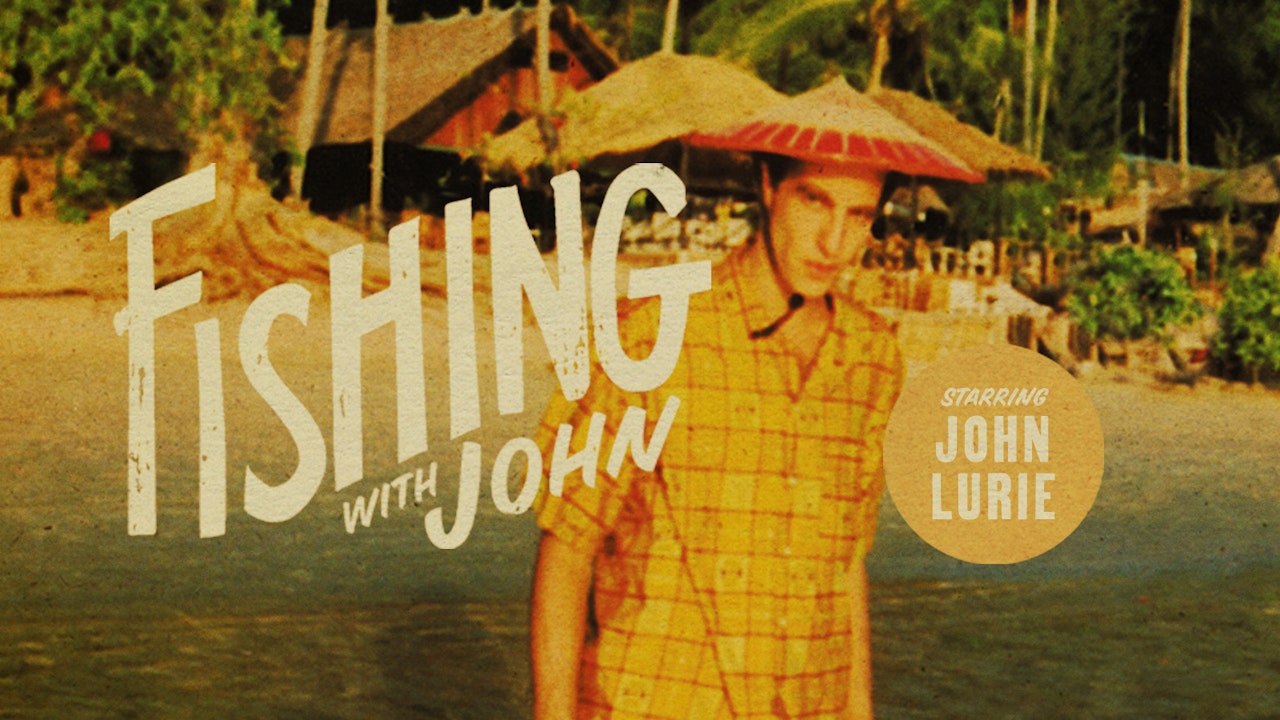
Fishing with John
“Life is so beautiful. Every breath… everyday of our lives…ahhh…fishing.”
What compelled Lurie to create this faux nature show in which he goes fishing with his friends to nonsensical commentary is beyond us, but we are so happy he did. The subversive cult classic is so loved that it’s even received the Criterion Collection seal of approval. With voiceover lines delivered with epic drama like “These are real men, doing real things,” “As always, night turns into day,” and “How deep is the Ocean? Nobody really knows for sure,” the show vibrates with a hysterical surrealism. But it also features long, meditative lulls that show two guys sitting quietly and waiting for a nibble. One minute they create some high-stakes, life-or-death scenario, the next they’re floating and quietly contemplating a la painter Bob Ross. A big favorite here, we especially love that beautiful opening theme song, Lurie’s alluring score and the short clips of John gleefully dancing to the sunset.
Below are links to the episodes in full on YouTube, but we recommend streaming the show in higher resolution on The Criterion channel.
Ep. 1 Jim Jarmusch
https://www.youtube.com/watch?v=ZTi2xEhyUYc
Ep. 2 Tom Waits
https://www.youtube.com/watch?v=sF4OkZ0B-q8
Ep. 3 Matt Dillon
https://www.youtube.com/watch?v=yEtbsrJ3dVA
Ep. 4 Willem Dafoe
https://www.youtube.com/watch?v=mBjuWBW5388
Ep. 5 Dennis Hopper Pt. l
https://www.youtube.com/watch?v=65p3PXNIsyY
Ep. 6 Dennis Hopper Pt. 2
https://www.youtube.com/watch?v=7dsFiR7SQxM
Painting with John
Lurie began painting in the mid-70s and primarily works with watercolor, which is the medium he employs on his recent HBO show Painting with John. He’s also worked with oil and pencil. Of his 2001 exhibit at PS1 in New York, Works on Paper, MoMa wrote: “By combining text and images in surprising and quixotic ways, Lurie creates a personal mythology that blurs distinctions between real experiences and the imaginary. Through strange and ironic lines like ‘New York is for idiots’ and ‘If you marry me we can live here,’ the watercolors are both brash and sensitive, honest and cavalier, implying a sense of fantastic narrative and extended moments.” The paintings mostly depict animals, nature and people, as seen through a singularly mythic and skewed lens.
Lurie himself describes the paintings as being “a logical development from the ones that were taped to the refrigerator 50 years ago.”
More of John’s works can be seen here:
https://www.johnlurieart.com/
Here is an excellent retrospective of John’s music throughout the years.




